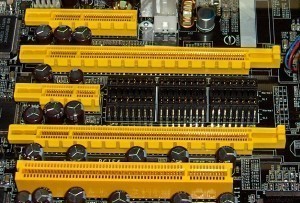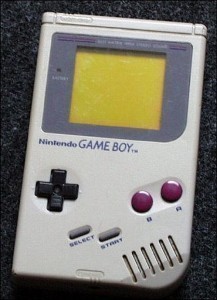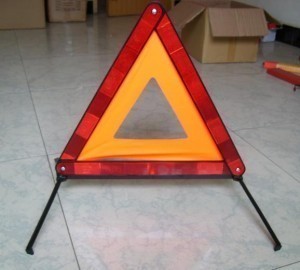PCI Slot Dimensions
The size of PCI slots is 32 by 64 (the width in bits).  As the PCI card evolved, various types appeared and in numerous sizes.
As the PCI card evolved, various types appeared and in numerous sizes.
Dimensions of PCI Cards
As technology evolved, the dimensions of the PCI cards changed. The old ones had a height of 107 mm (4.2 inches) and 312 mm (12.283 inches) deep. Over time the PC cards became smaller.
The cards included in computers today are the half length extension card. The measurements are 1.42 inches (36.07 mm) up to 2.536 inches (64.41 mm). The card’s depth varies from 4.721 inches (119.91 mm) up to 6.6 inches (167.64 mm). The bracket size is 3.118 inches (79.2 mm).
Mini PCI Cards
Because laptops have different dimensions, the size of PCI slots and cards differed from those used in desktop PCs. The type IA card uses a 100-Pin Stacking and 7.5 × 70 × 45 mm. The large Z dimension is 7.5 mm.
The IB type card connector is 100-Pin Stacking with dimensions of 5.5 × 70 × 45 mm. The smaller Z dimension is 5.5 mm. The IIA type has a 100-Pin Stacking connector. The dimensions are 17.44 × 70 × 45 mm. The large Z dimension is 17.44 mm.
The IIB card has a 100-Pin Stacking connector. The card’s dimensions are 5.5 × 78 × 45 mm. The smaller Z dimension is 5.5 mm. The size of PCI slots continued to change in accordance with the emerging PCI cards.
The IIIA card type has a 124-Pin card edge measuring 2.4 × 59.6 × 50.95 mm. The larger Y dimension is 50.95 mm. The IIIB connector is 124-Pin card edge. The physical size is 2.4 × 59.6 × 44.6 mm. The smaller Y dimension is 44.6 mm.
Typical PCI Specifications
The average PCI card has a clock speed of 33.33 MHz with synchronous transfers. The highest transfer rate for the 32 bit bus width is 133 MB/s. That’s about 133 million bytes per second. Regardless of the size of PCI slots, the 32 bit bus width is employed.
The memory address is either 32- or 64-bit. That is about 4 gigabytes or 16 exabytes. The configuration space is 256-bytes for every device. The volt signaling is 5. The cards also have reflective wave switching.
Variants
The PCI 2.1 came out in 1995 which permitted 66 MHz signaling. The PCI 2.3 allowed universal keying and utilized 3.3 volts. The PCI 3.0 eliminated the 5 volts. The CardBus is the form factor for the 32 bit PCI. The PCI/104-Plus employs the PCI by relying on various connectors.
The PCI X was designed for 64 bit cards on servers. PCI-X 1.0 boosted the frequency to 133 MHz. The PCI-X 2.0 had pushed the rate to 266 MHz. The first PCI came out in 1992. However it was just a component level specification. It was the PCI 2.0 that set the standards. It came out in 1993.
The size of PCI slots continues to evolve. Although the old PCI was superseded by the AGP, the PCI Express has now become the standard in new computers.




